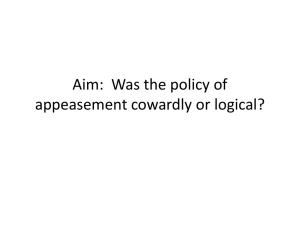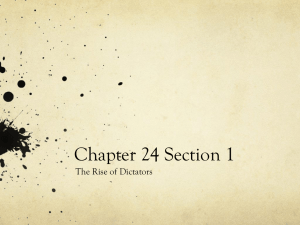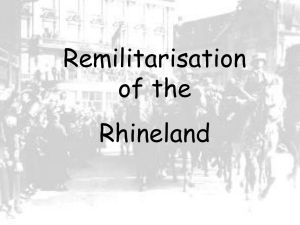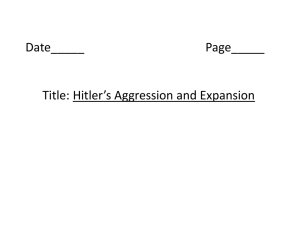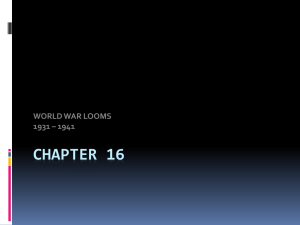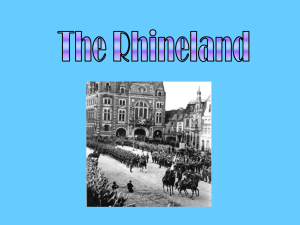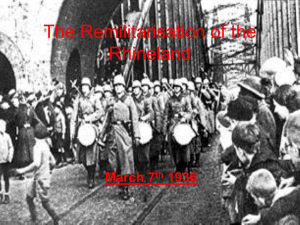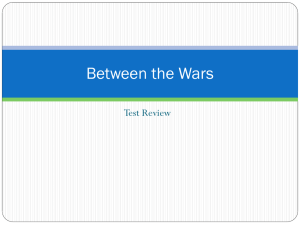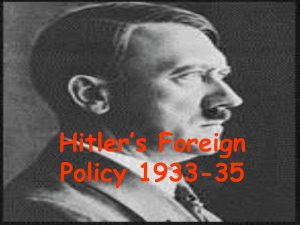The Remilitarisation of the Rhineland
advertisement
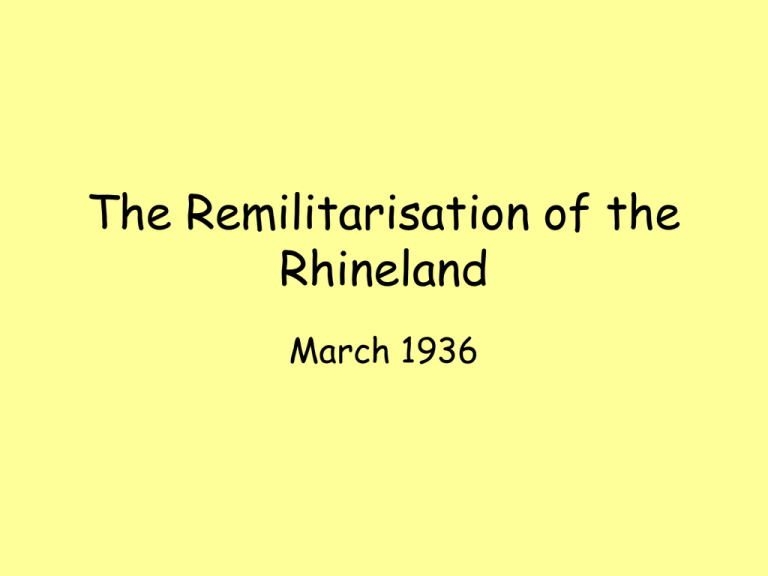
The Remilitarisation of the Rhineland March 1936 How was the event reported at the time? • Watch this clip. • http://www.britishpathe.com/record.php?id =6361 The Rhineland • In March 1936, Hitler took his first really big risk by moving troops into the Rhineland area of Germany. • The demilitarisation of the Rhineland was one of the terms of the Treaty of Versailles. It had also been accepted by Germany in the Locarno Treaties of 1925 • Hitler was taking a huge gamble. If he had been forced to withdraw, he would have faced humiliation and would have lost the support of the German army (many of the generals were unsure about him, anyway). • France had just signed a treaty with the USSR to protect each other against attack from Germany (see source opposite). • Hitler used the agreement to claim that Germany was under threat. • He argued that in the face of such a threat he should be allowed to place troops on his own frontier. An American cartoon published in March 1936 showing the encirclement of Germany by France and the USSR. German troops marching through the city of Cologne in March 1936. This style of marching with high steps was known as ‘goose-stepping’. How was the event received? Source 1 • At that time we had no army worth mentioning . . . If the French had taken any action we would have been easily defeated; our resistance would have been over in a few days. And the Air Force we had then was ridiculous – a few Junkers 52s from Lufthansa and not even enough bombs for them . SOURCE 2 • Hitler has got away with it. • • Hitler looks back on his gamble over the Rhineland some years after the event. France is not marching. No wonder the faces of Göring and Blomberg [Nazi leaders] were all smiles. Oh, the stupidity (or is it the paralysis?) of the French. I learnt today that the German troops had orders to beat a hasty retreat if the French army opposed them in any way. Written by William Shirer in 1936. He was an American journalist in Germany during the 1930s. He was a critic of the Nazi regime and had to flee from Germany in 1940. Why was Hitler not stopped? • As the troops moved into the Rhineland, Hitler and his generals sweated nervously. They had orders to pull out if the French acted against them. • Despite the rearmament programme, Germany’s army was no match for the French army. It lacked essential equipment and air support. • The attention of the League of Nations was on the Abyssinian crisis which was happening at exactly the same time. • The League condemned Hitler’s action but had no power to do anything else. • Even the French were divided over what to do. They were about to hold an election and none of the French leaders was prepared to take responsibility for plunging France into a war. Of course, they did not know how weak the German army was. • In the end, France refused to act without British support and so Hitler’s big gamble paid off. A British cartoon about the reoccupation of the Rhineland, 1936. Pax Germanica is Latin and means ‘Peace, German style’. What is the message of this cartoon? Describe events in the Rhineland, 1936. (4) Why did Hitler remilitarise the Rhineland in 1936? (6)

